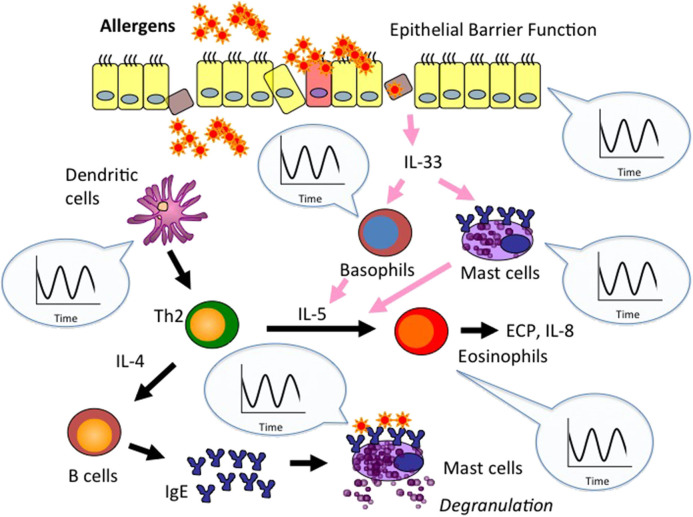Figure 1.
Circadian clock activity is embedded in epithelial barrier function and immune response associated with allergic disease. Epithelial barrier disruption enables entry of allergens into the body and leads to production of innate cytokines such as IL-33. The cytokines skew dendritic cell (DC) phenotypes, activate innate immune cells (e.g., mast cells, basophils), and promote Th2 development. Th2 cells secrete IL-4 and IL-5, which promote IgE production from B cells and eosinophil accumulation, respectively, and shape allergic inflammation. As stated in the text, circadian clock activity is embedded in the control of epithelial barrier function and immune cell responses associated with allergic disease. Circadian control of allergy-related epithelial barrier functions and innate immune cell responses (e.g., mast cells, basophils, eosinopihls, dendritic cells) has been extensively studied so far. Thus, we emphasize clock control of these elements in this figure. Please note that macrophage-, innate lymphoid cell-, T cell-, and B cell-responses are also controlled by the circadian clock. Accordingly, clock disruption may predispose allergic disease by deregulating epithelial barrier function and immune cell responses.

